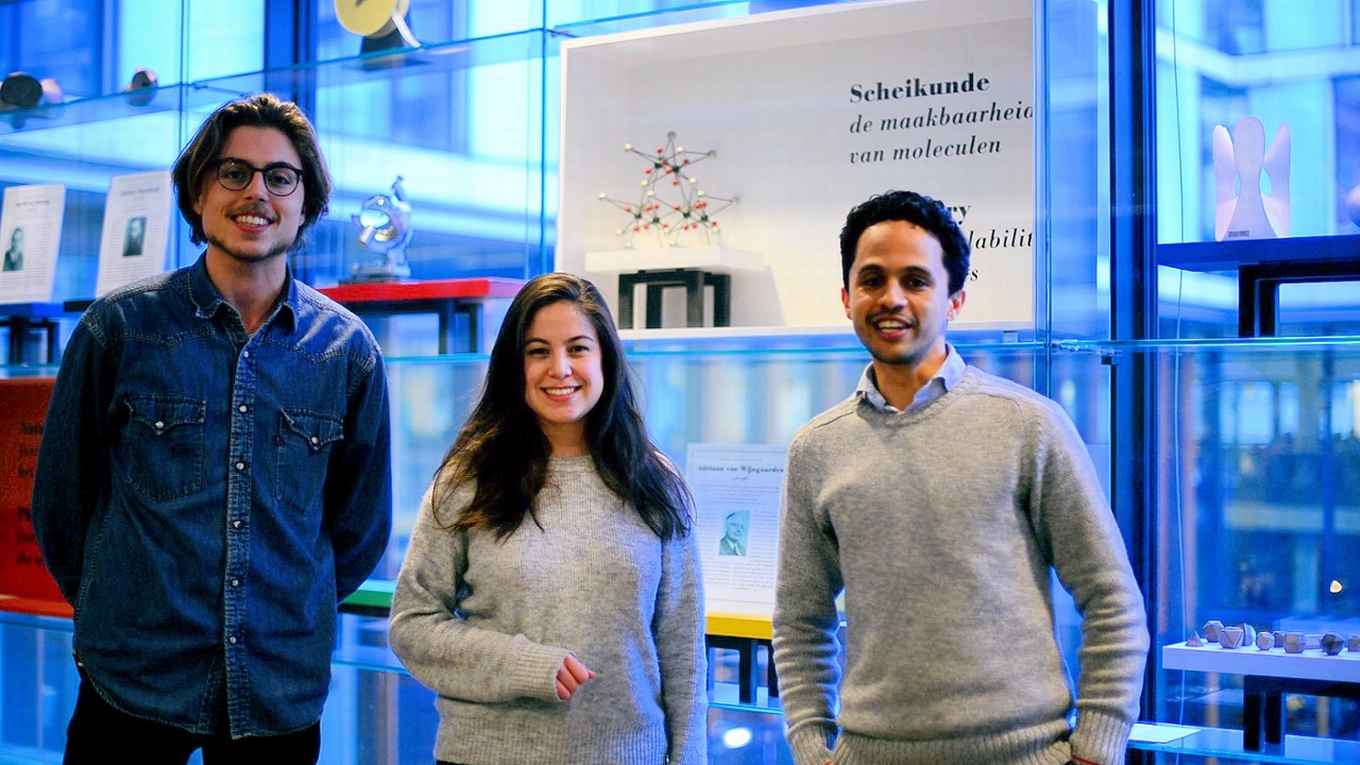Amsterdam students to explore quantum-optical chemical catalysis
Light-matter coupling for active reaction control
26 May 2018

Hannah Jonas and Juan Diego Arias Espinoza (master's students at the VU/UvA programme in Chemistry), and Adriaan Schiphorst (master's student at the VU/UvA Physics programme), have just received notice of their selection for the Top Sector Chemistry Student Competition 2018. This means that they can carry out their 2-months project this summer as part of a traineeship, paid for by the Top Sector Chemistry. A jury will evaluate their results and those of two other competing teams, to announce the winner at CHAINS 2018, the Dutch national chemistry conference to be held in December in Veldhoven.
Out-of-the-box
With their team 'The Cavity Catalysts', the three students propose to employ tailored light-matter coupling to actively control and steer molecular properties. "The concept of coupling light to matter has been developed in the physics community but holds a great promise for application in chemistry" says student team manager Hannah Jonas. "It can be used to influence molecular potential energy surfaces and reaction rates. We think this offers a great opportunity to make chemical and bio-chemical production processes more sustainable, more efficient, and cleaner."
According to Jonas, current developments in chemistry generally concern adding functionalities or improving properties. "To really meet societal challenges in sustainability, this will not suffice", she says. "Major advances will have to come from out-of-the-box approaches that go beyond the isolated disciplines. That is what we are pursuing here."

The students hope to establish that active reaction control through light-matter coupling indeed has the potential for an improved control of reaction paths and branching ratios, and reduction of the overall energy needed.
Scientific team
For further practical input on implementing the project and helping to think about the results, the students have asked Wybren Jan Buma (Van 't Hoff Institute for Molecular Sciences), Huib Bakker (AMOLF) and Dr Robert Spreeuw (Van der Waals-Zeeman Institute, Institute of Physics) to team up with them. “This is a very exciting approach”, says Buma on behalf of the three scientists, "because very fundamental physics are used to meet important societal challenges. It's a fascinating project since it is really multidisciplinary, requiring inputs from many areas of expertise”. Hannah Jonas adds: “We apply molecular chemistry, quantum electrodynamics, and advanced spectroscopies, so we need a lot of know-how and technical support. That is exactly what the scientists and workshops of the UvA Faculty of Science and AMOLF can provide”.